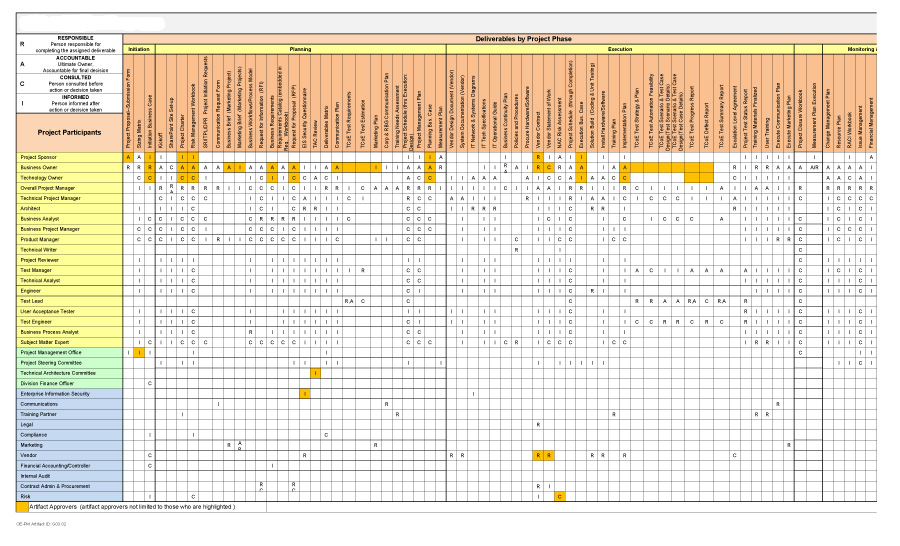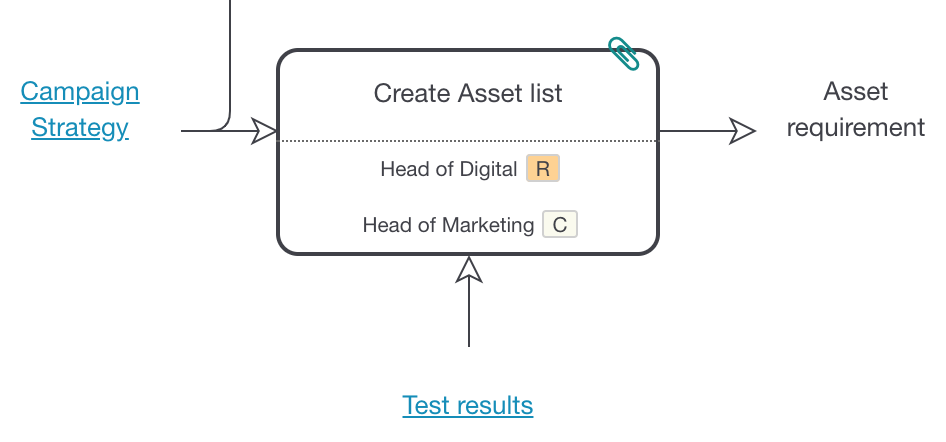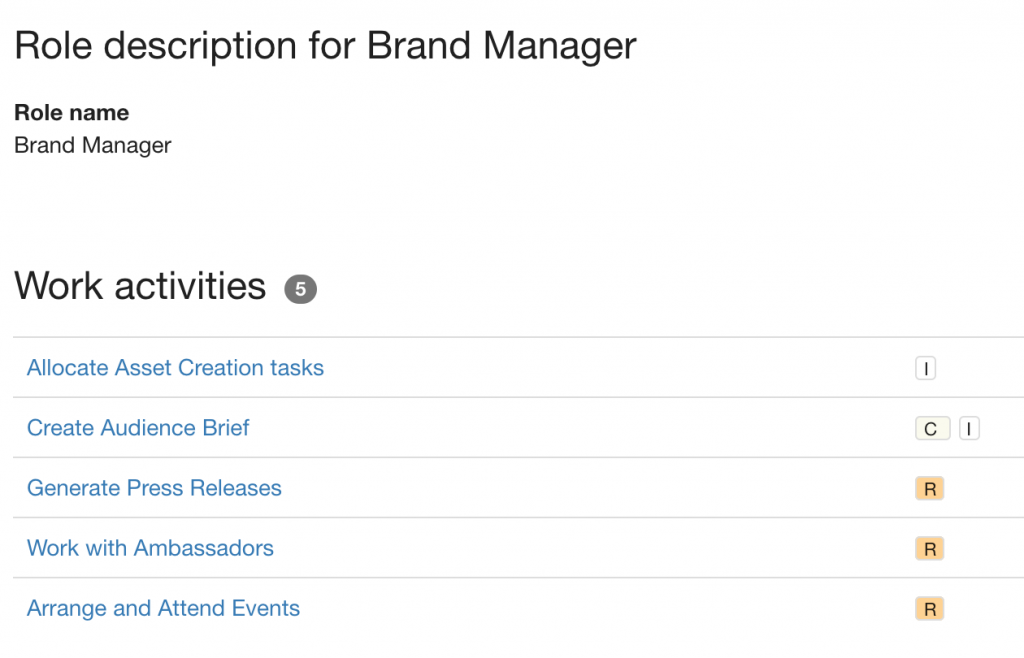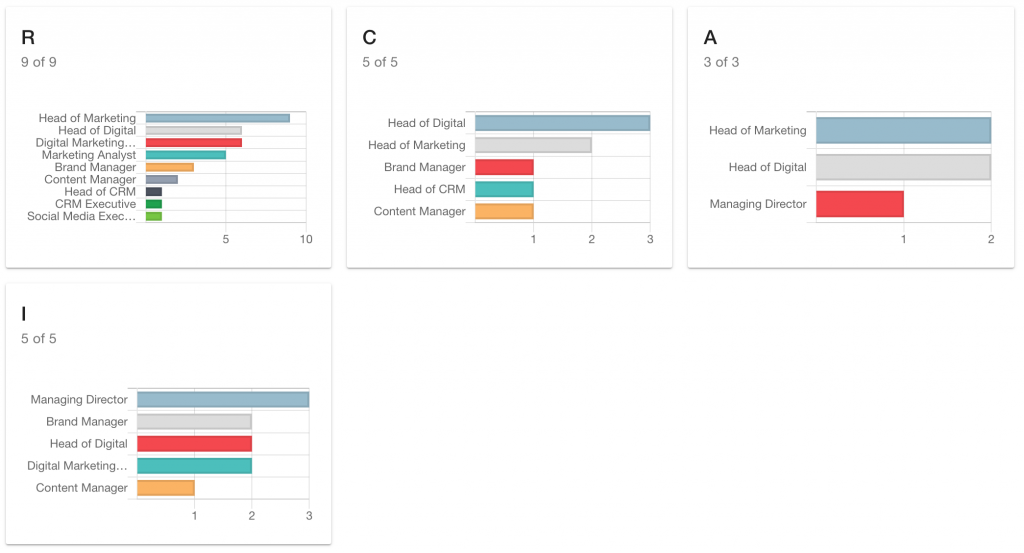Looking for a RACI Alternative?
There are RACI alternatives out there that can help you. In this blog we’ll explore your options plus you can get access to our simple guide on how to apply these different methods to your Process Improvement Initiatives.
Do you need a clearer way to analyse roles and responsibilities in your organisation?
Struggling to find an effective method that gives you the data you need from the information you put in?
We’ll examine how to tackle the vagueness of RACI that so many of us find so confusing and demonstrate easy ways of digesting the information, especially in large and complex documents. If you need a RACI alternative then read on to discover more.
Fixing the RACI terminology confusion
Let’s start by tackling the terminology… As a reminder RACI stands for
- Responsible
- Accountable
- Consult
- Inform
We use RACI to give everyone a level of responsibility in each activity. The point is that it should then be clear what is expected of everyone working on that activity. However, the truth is that often we have different views on the meanings. Especially the difference between Responsible and Accountable.
In this RACI blog we explain why we think Responsible is the person who does the majority of the work and Accountable is the person who owns the output of the work – like the director or process owner for example.
However lots of people might disagree with this. In addition, for international companies, there is the added challenge of being lost in translation. Responsible and Accountable can mean the same thing in other languages. Which can lead to much confusion!
There are a number of RACI alternatives that correct this issue and our favourite is RATSI.
RATSI as a RACI Alternative
RATSI stands for:
- Authority – “owns” the activity or the decision to be made. Clearly not involved in the day to day work.
- Responsible – for ensuring the activity is done (not necessarily doing the work but ensuring it is completed to an agreed standard).
- Task – actually does the work as described.
- Support – provides inputs in exceptional situations / edge cases (otherwise it would be Task).
- Informed – is informed the activity will happen / has been done (successfully or not!).
RATSI is our favourite because it stops the vagueness and confusion. In RATSI, R is still Responsible but it means the owner not the doer. The doer is T (Task) and A (Authority) is for the person who takes go/no go decision
Tools for applying RACI or RACI Alternatives
Common Tools for RACI
Like any tool, software for capturing, analysing and sharing RACI information should make our lives easier. Of course the purpose of RACI is to actually clarify roles and responsibilities for everyone. The truth is that often the activity makes things even more confusing and leads to frustration.
Often we see that RACI charts are represented as a Matrix. Roles are listed along the X or Y axis and key activities along the other. Where the two intersect is where you record the responsibility level – R,A,C or I.
The idea is that for any given role you simply follow the row (or column!) for that role and it shows the varying levels of responsibility for each activity. Or you can select an activity and look at the matrix to see who is involved. Spreadsheets can be used for this type of grid and therefore RACI matrices are often produced in Excel or Google Sheets. Some project management software products also have a RACI matrix capability as well. Drawing softwares such as MS Visio can also include templates for making a matrix although they can be harder to manage and update when things inevitably change.
Skore, the Process Improvement platform was designed to handle RACI matrices and below we’ll explain in more detail how it can help you solve your RACI/RATSI queries.
The main problems with common RACI tools
While creating a RACI matrix in something like Excel seems straightforward, actually it has a number of problems which means people search for a RACI alternative. How often have you spent days creating a matrix to find that no one ever looks at it again? Or worked hard to craft a detailed spreadsheet only to be told that it’s still too confusing to understand everyone’s roles and responsibilities?
If this is you, have you considered that a matrix rarely exists without a process diagram alongside it? And that the activities represented in the matrix are generally part of a wider process. So it makes sense that the team really needs to understand the process in the first place.
However often we create the process as a separate document and it’s referenced separately. Or the team hasn’t understood the process. It makes sense that activities in the matrix are going to be pretty unclear in that case. Even worse if there are lots of detailed activities it will lead to an enormous matrix which is impossible to read.

SKORE – an easy, simple way to capture and understand RACI or any responsibility matrix.
Skore was designed to incorporate simplicity at every level. The process improvement platform uses UPN – the easy process mapping language designed to be understood by anyone in your team. In Skore every time a user assigns a role to an activity they assign a responsibility. This means that the team can focus on one activity at a time and agree on the responsibility level together.

So while you map a process in a workshop, Skore automatically creates role descriptions. These show the activities of each role as well as the responsibility level. If you’re using a RACI alternative, Skore supports models such as RATSI and RAPID or allows you to create your own custom model.

Easy to Read Matrix
Even better, Skore effortlessly creates a simple RACI matrix using the Reports tab. Plus, if you prefer, it can be exported to a spreadsheet when needed.
This means one of the main benefits is that you store a visualisation of the process alongside the RACI information, rather than having two separate documents. Plus, Skore links the information so updating the process means you are also updating the RACI information and vice versa.
Many companies also use tools such as RACI for organisation design. Either if they are are designing completely new processes, or transforming existing processes. In this case RACI helps to design new roles in the organisation. The Skore platform’s powerful analytics help you determine whether you have the right balance of responsibilities across the team.

It can even help you model scenarios to understand how many people you need to run the process, based on their responsibilities.#
Conclusion
RACI is a powerful tool for helping teams to clarify roles and responsibilities but it comes with a number of challenges. This results in people looking for a RACI alternative. To find the right solution first evaluate the specific challenges you face and try to identify what the true issue is. For example, if it’s because you are suffering confusion and vagueness around the RACI acronym then look to use an alternative such as RATSI.
If you are struggling with an overly complex matrix or a lack of understanding from yourself or your organisation, then re-evaluate the tools you are using in the first place. It could be that Skore is the solution given that it combines the power of simple process mapping with RACI and analytics. If you’d like to find out more about how we can help you then get in touch with the team below.

One thought on “Looking for a RACI Alternative?”
Comments are closed.